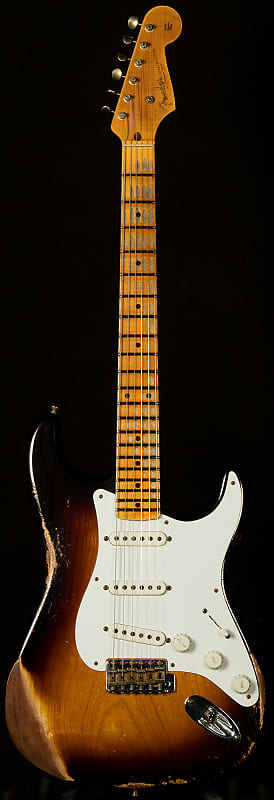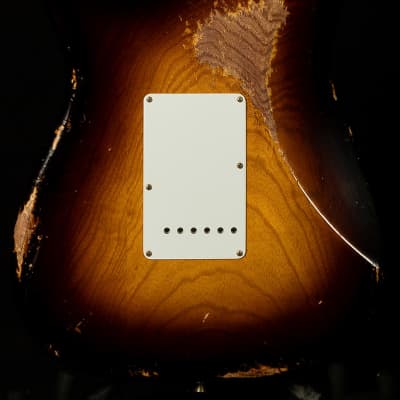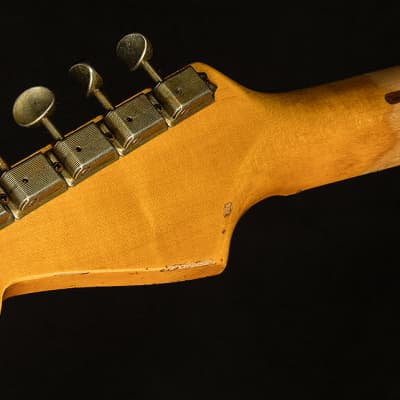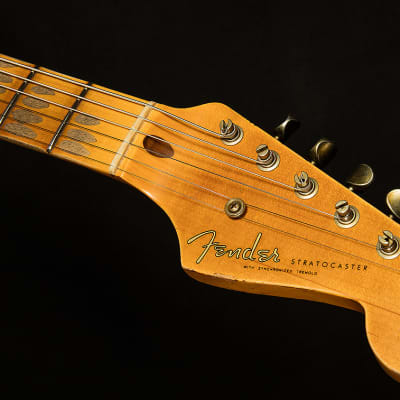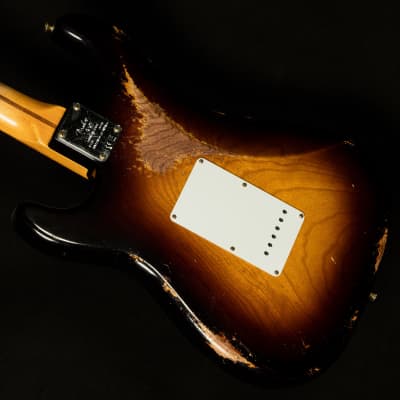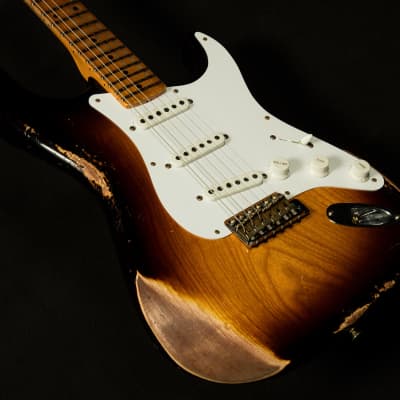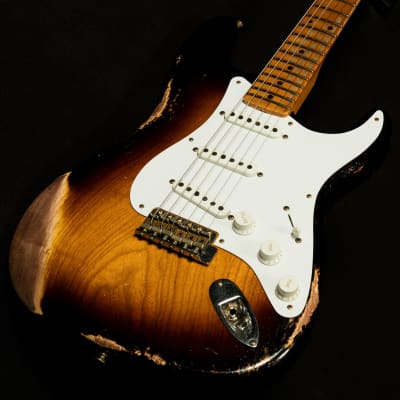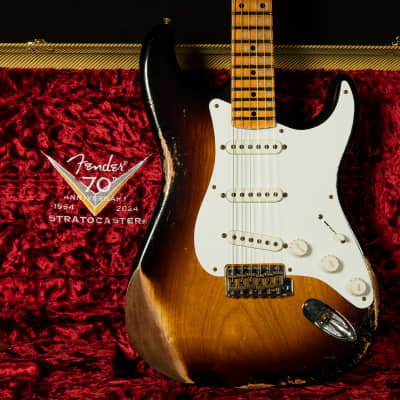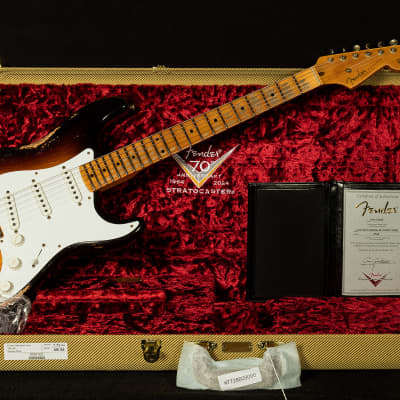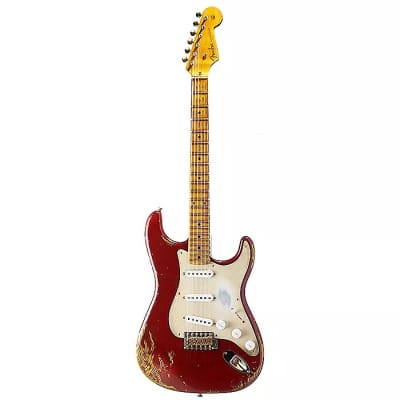From '54 'Til Infinity
Most products that were invented in 1954 have faded away by now. Our society has gone through half a dozen periods of social upheaval, multiple wars, and several financial crises since then, and our day-to-day life looks nothing like it used to. Technology has progressed at such a rapid rate since then that even the fifties’ most space-age designs became obsolete in a couple years. Yet despite all the change that occurred on this ball of dirt and water over the last six decades, one thing has remained constant: the Fender Stratocaster.
The Stratocaster’s longevity is a testament to the brilliance of Leo Fender’s original design. Originally, Leo wanted the Strat to be Fender’s flagship high-end guitar, and he put an immense amount of research and development into making it the best ax on the market. It went through two years of refinement before Leo finished the first small batch in 1953, but the tremolo system made the guitar sound like “an amplified banjo with no sustain” according to early beta-tester Bill Carson. Rather than put out a product he wasn’t satisfied with, Leo retooled his factory and took another crack at designing a better vibrato system.
The resulting revolutionary “floating tremolo” tailpiece is an excellent example of why the Stratocaster has withstood the test of time. Leo Fender designed the Stratocaster’s bridge thinking it would be used for gentle bends and narrow vibrato, but he did such a good job overdesigning it that it was able to handle Jimi Hendrix’s rampant whammy bar abuse during the psychedelic seventies and Kurt Cobain’s on-stage freakouts during the noisy nineties. The basic design of the Strat never had to change, because Leo got it right the first time.
Of course, genius is rarely understood in its own time, and the guitar-playing world initially dismissed the Stratocaster as a novelty instrument. That all changed in 1957 when a young man with horn-rimmed glasses and a hiccupping falsetto named Buddy Holly played one during a performance on The Ed Sullivan Show. Then, the music world caught a fever for the Stratocaster that spread all over the world. Across the pond, Shadows’ guitarist Hank Marvin brought the first Stratocaster to the UK and infected countless British youths with Strat fever. Around that same time, a young surf guitarist named Dick Dale was experimenting with tremolo picking on his Strat, and an upstart blues guitarist named Buddy Guy realized that the blues sounded extra-sweet on a Strat. From then on, there was no stopping Leo’s iconic guitar.
Most design aspects of the Stratocaster haven’t changed at all since then. It’s an utterly timeless guitar, and that’s why you see musicians from all walks of life and genres playing them. Clapton aficionados, Jeff Beck enthusiasts, garage rock dudes with Iggy Pop tattoos, and Yngwie’s shred disciples all love the Strat. Its tone works in every genre from metal to pop to fusion, its contoured body makes it comfortable to play for long gigs and endless recording sessions, and (most importantly) it’s still cooler than a polar bear’s toenails.
Cool is hard to quantify, but we guitar players know it when we see it, and the Fender Stratocaster has it in spades. This may be Leo Fender’s greatest triumph, actually—he designed a guitar that is just as appealing to sixteen-year-olds in 2024 as it was in 1954.
Now, Wildwood Guitars is proud to honor Leo Fender’s legacy by offering a truly special Wildwood 10 Limited Edition 70th Anniversary '54 Strat for our exceptional customers. These guitars are meant to build upon one of the most storied legacies in the history of lutherie, and we are confident that they will be as iconic seventy years from now as they are today.
- Model: Limited 70th Anniversary 1954 Stratocaster
- Finish Color: Wide Fade 2-Tone Sunburst
- Aging: Heavy Relic
- Finish Type: Lacquer
- Weight: 7.73 lbs.
- Body Wood: Ash
- Neck Wood: One Piece of Quartersawn Maple
- Neck Shape: Custom 70th Anniversary Strat-Style
- Neck Dimensions: .890 1st - .990 12th
- Fingerboard Radius: 7.25" to 9.50" Vintage Compound Radius
- Width at Nut: 1.625"
- Nut Material: Bone
- Frets: 21 47095 Medium-Vintage
- Pickups: 3 Custom Shop Hand-Wound '54-Style Strat Single-Coils
- Controls: 1 Volume, 2 Tone, 5-Way
- Hardware: Nickel/Chrome
- Tuners: Vintage-Style
- Bridge: Custom Shop Vintage-Style Tremolo
- Pickguard: 1-Ply White
- Case: Fender Custom Hardshell with 70th Anniversary Embroidered Logo on Interior
- COA: Yes
